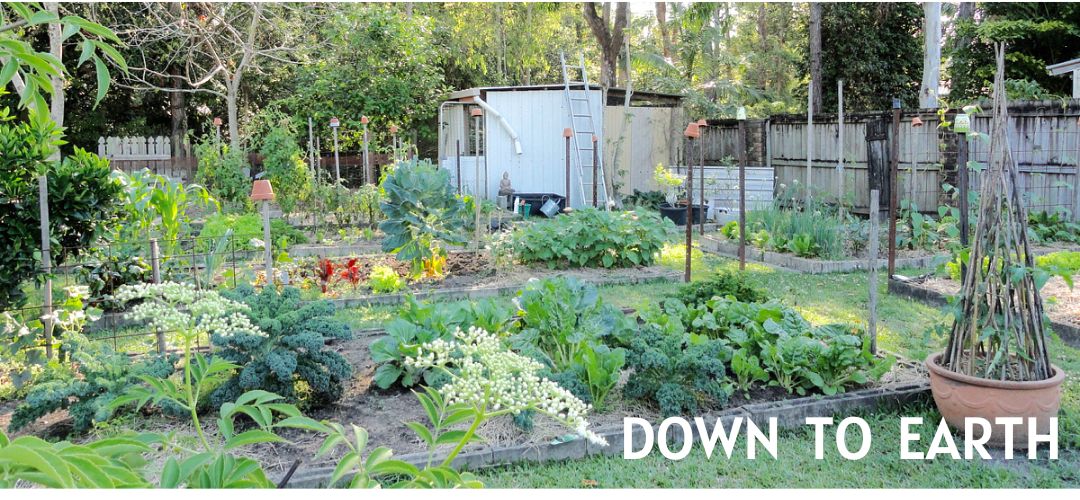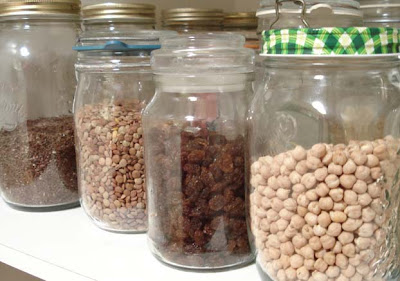One of the many things you can do on your journey towards simplicity is to learn how to store things in a way that will stop them spoiling before you use them. It’s an important part of our philosophy to look after what we own.
When I lived in Europe I noticed it was commonplace for houses to have cellars. These were used to store potatoes, onions, garlic, jams, chutneys, sauces, beer, wine, seeds, flour and other perishables. If you have a cellar, make the most of it. It will provide an ideal place, with a consistent temperature, to store all manner of goods. In Australia, cellars are almost unknown and many houses do not have a large amount of cupboard space. The understanding being that goods will not be stored in the home, but bought continually from the shop.
When I lived in Europe I noticed it was commonplace for houses to have cellars. These were used to store potatoes, onions, garlic, jams, chutneys, sauces, beer, wine, seeds, flour and other perishables. If you have a cellar, make the most of it. It will provide an ideal place, with a consistent temperature, to store all manner of goods. In Australia, cellars are almost unknown and many houses do not have a large amount of cupboard space. The understanding being that goods will not be stored in the home, but bought continually from the shop.
Our home is a modest slab brick construction with an open plan kitchen and dining area. In the kitchen we have adequate cupboards and a pantry and just off the kitchen, in the dining area, we have a stockpile cupboard. There is a linen cupboard in the hallway and a freestanding cupboard in the main bathroom. Apart from wardrobes and dressers, they are my main storage areas inside the house. Outside we have a brick garden shed and a large storage shed and workshop.
If you don’t have a lot of storage space in your home you might have to look for unusual places to store goods. Under the bed is the obvious one and here is an article here about making an under bed storage unit. Look around your home and see if there are other places you could use - maybe under the stairs or under a table. I have a friend who made a fitted cover for her dining room table, which she rarely uses, and under it she stores toilet paper, tissues and rice.
While there are some exceptions like cheese and wine, most food will not improve in quality or flavour when stored for a period of time. You should store food when it still looks, feels and smells good. Most fresh food will be eaten straight away or stored in the fridge. If it's not eaten fresh the best form of storage over the long term are glass containers. Glass allows you to see what’s inside, it seals well, doesn’t taint the food and it’s a durable product, lasting many years. I have several sizes of glass containers with rubber seals. The seals have to be replaced every few years but overall they are a very reliable container.
Plastic containers are also often used for kitchen food storage. In my experience, plastic doesn’t seal as well as glass and you may sometimes get insect contamination using plastic. Plastic may also take on the smell of the food being stored, which may effect what you can store in it from then on. If you’re using plastic containers make sure you always seal them properly, ensuring a neat seal around the entire perimeter of the lid.
If you don’t have a lot of storage space in your home you might have to look for unusual places to store goods. Under the bed is the obvious one and here is an article here about making an under bed storage unit. Look around your home and see if there are other places you could use - maybe under the stairs or under a table. I have a friend who made a fitted cover for her dining room table, which she rarely uses, and under it she stores toilet paper, tissues and rice.
While there are some exceptions like cheese and wine, most food will not improve in quality or flavour when stored for a period of time. You should store food when it still looks, feels and smells good. Most fresh food will be eaten straight away or stored in the fridge. If it's not eaten fresh the best form of storage over the long term are glass containers. Glass allows you to see what’s inside, it seals well, doesn’t taint the food and it’s a durable product, lasting many years. I have several sizes of glass containers with rubber seals. The seals have to be replaced every few years but overall they are a very reliable container.
Plastic containers are also often used for kitchen food storage. In my experience, plastic doesn’t seal as well as glass and you may sometimes get insect contamination using plastic. Plastic may also take on the smell of the food being stored, which may effect what you can store in it from then on. If you’re using plastic containers make sure you always seal them properly, ensuring a neat seal around the entire perimeter of the lid.
If you’re new to the home storage of food, work with the containers you have but as you buy more, try to get the large glass ones. You can also recycle old jars, I have several of these and they’re excellent, and you can buy glass jars from supermarkets, department stores and op shops.
Food in Australia must be marked with one of three date codes: “best before” date, “use by” date and “baked on” date.
Best before
When food is stamped with a best before date, it means that the food, if still in the intact package, is at its premium on or before the date marked. If the date has passed, the food may still be edible, but may not be at its best. Sometimes you will see best before food that has passed its date reduced for sale in the shop.
Use-by
This indicates the end of the acceptable storage life of the food. All food that should be eaten within a certain period of time for health and safety reasons, will be marked with a use-by date. It is illegal to sell food after the date marked as “use –by”.
Baked on
This is used on bread that has a shelf life of less than seven days.
When buying food that will be stored for a while, always make sure the can or package is not damaged. When adding new items to your stockpile, always add to the back and take from the front. You need to rotate your stock so nothing spoils.
I put all the dry food I buy, like rice, flour, pasta, lentils, dried chick peas and beans, in the freezer when they are brought from the store. All my dried goods are stored in the freezer until I need to use them, then they are placed in a glass jar and put in the pantry.
I learnt the hard way that food needs to be stored correctly. A pantry moth invasion made me give a lot of grains and legumes to the chooks. Never again. All you need to do is to work out what you have to store over a long period and find the right storage method for it. We're all different and your solutions may be different to mine but if you ensure your food and dry goods survive for long periods, you'll save money and reduce the amount you waste.
UPDATE
I didn't have the time yesterday to take new photos so I've just done that now. The photo below shows the large jars I use. The two on the left and right are canning jars with rubber ring seals that are replaced every year or so. The jar in the middle was given to me by my son. I have several of these and they were originally used to hold olives. They easily hold a kilo (2lb 2oz) of sugar, flour, beans etc.
Food in Australia must be marked with one of three date codes: “best before” date, “use by” date and “baked on” date.
Best before
When food is stamped with a best before date, it means that the food, if still in the intact package, is at its premium on or before the date marked. If the date has passed, the food may still be edible, but may not be at its best. Sometimes you will see best before food that has passed its date reduced for sale in the shop.
Use-by
This indicates the end of the acceptable storage life of the food. All food that should be eaten within a certain period of time for health and safety reasons, will be marked with a use-by date. It is illegal to sell food after the date marked as “use –by”.
Baked on
This is used on bread that has a shelf life of less than seven days.
When buying food that will be stored for a while, always make sure the can or package is not damaged. When adding new items to your stockpile, always add to the back and take from the front. You need to rotate your stock so nothing spoils.
I put all the dry food I buy, like rice, flour, pasta, lentils, dried chick peas and beans, in the freezer when they are brought from the store. All my dried goods are stored in the freezer until I need to use them, then they are placed in a glass jar and put in the pantry.
I learnt the hard way that food needs to be stored correctly. A pantry moth invasion made me give a lot of grains and legumes to the chooks. Never again. All you need to do is to work out what you have to store over a long period and find the right storage method for it. We're all different and your solutions may be different to mine but if you ensure your food and dry goods survive for long periods, you'll save money and reduce the amount you waste.
UPDATE
I didn't have the time yesterday to take new photos so I've just done that now. The photo below shows the large jars I use. The two on the left and right are canning jars with rubber ring seals that are replaced every year or so. The jar in the middle was given to me by my son. I have several of these and they were originally used to hold olives. They easily hold a kilo (2lb 2oz) of sugar, flour, beans etc.
The bucket below is similar to what Niki is talking about in the comments. This is a 5 kilo recycled plastic bucket I use to store my bread flour. You can buy these, but I got mine free from the local baker who buys icing in them. They have a good seal and are great for storing large amounts of dry food.
If you find some of these food quality plastic buckets that have been used to store food, wash them out with soapy water, fill with water and add two cups of white vinegar. Allow it to stand for a day, then wash out again and rinse. That should get rid of any residual smells in the plastic.



